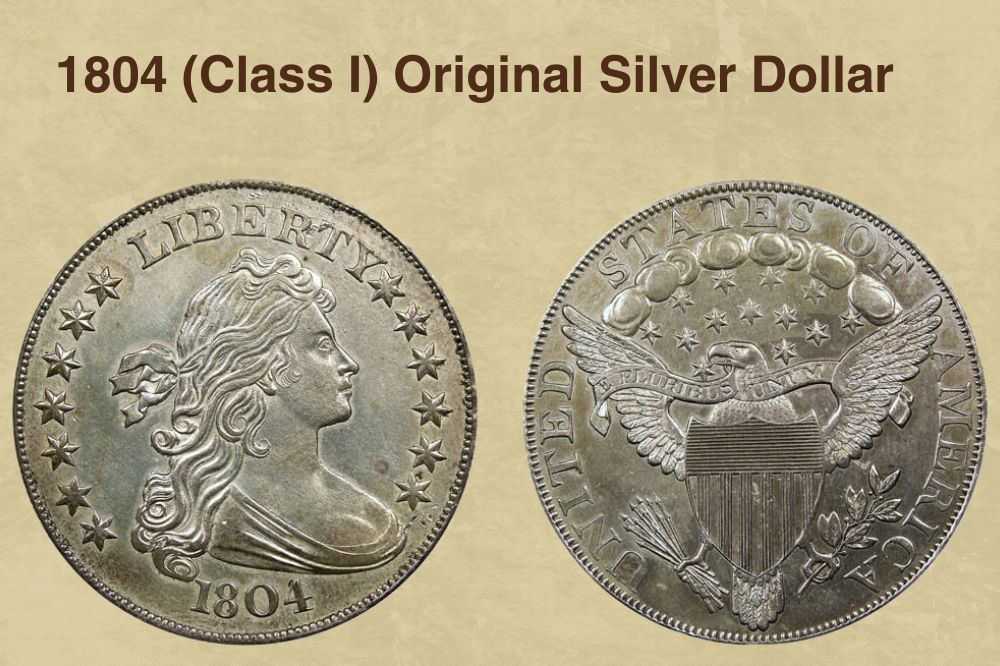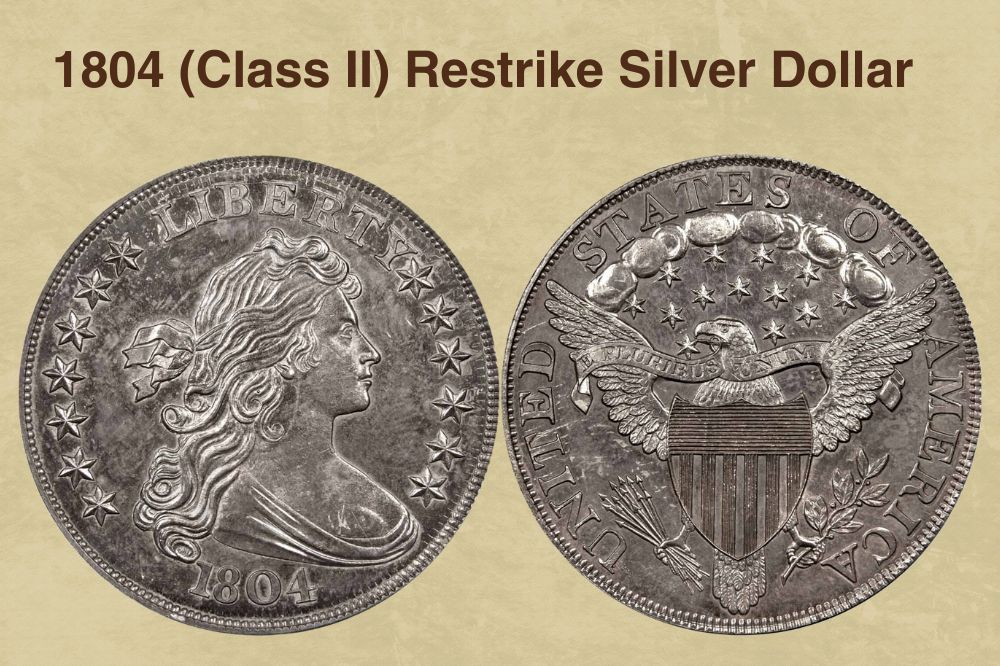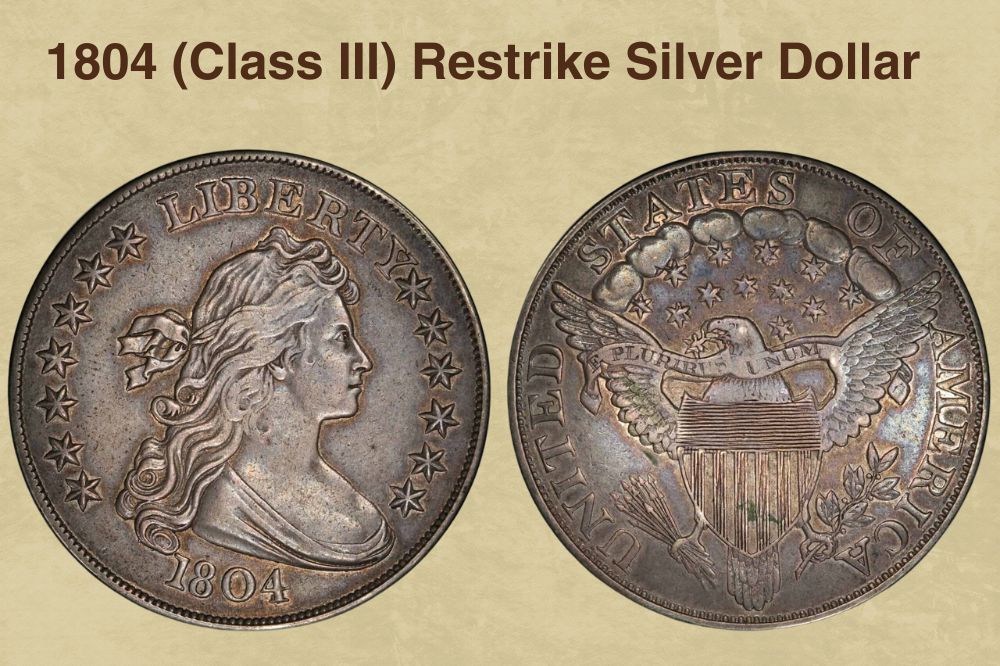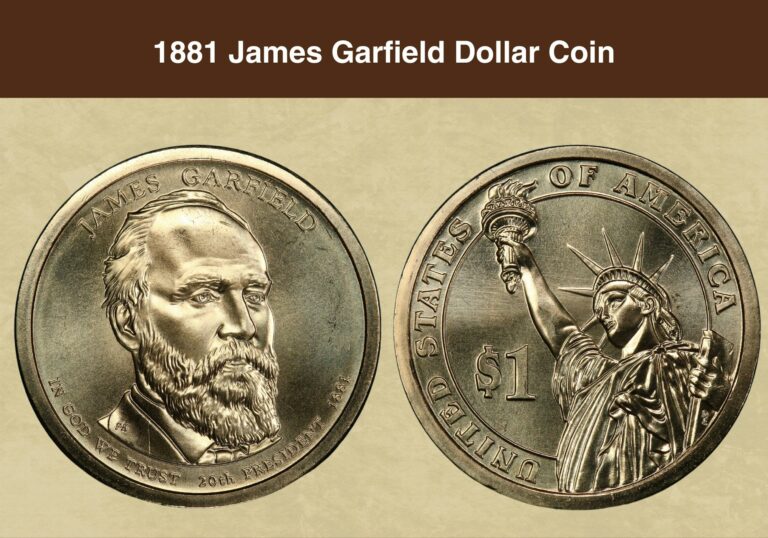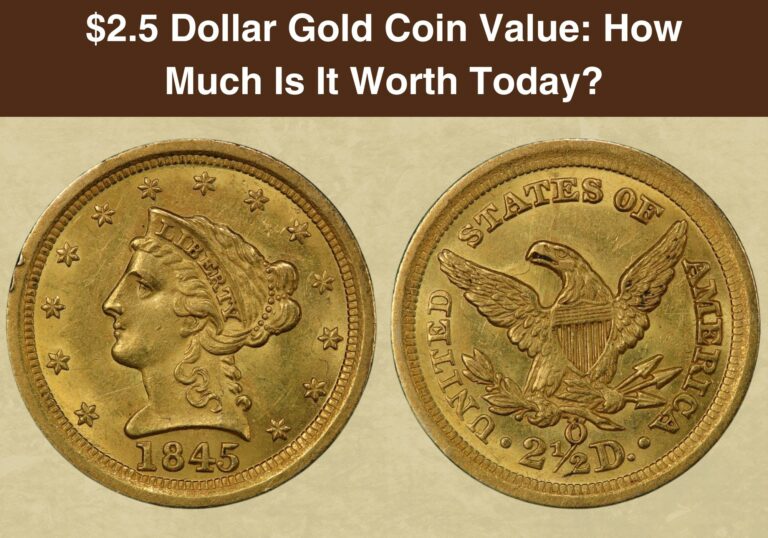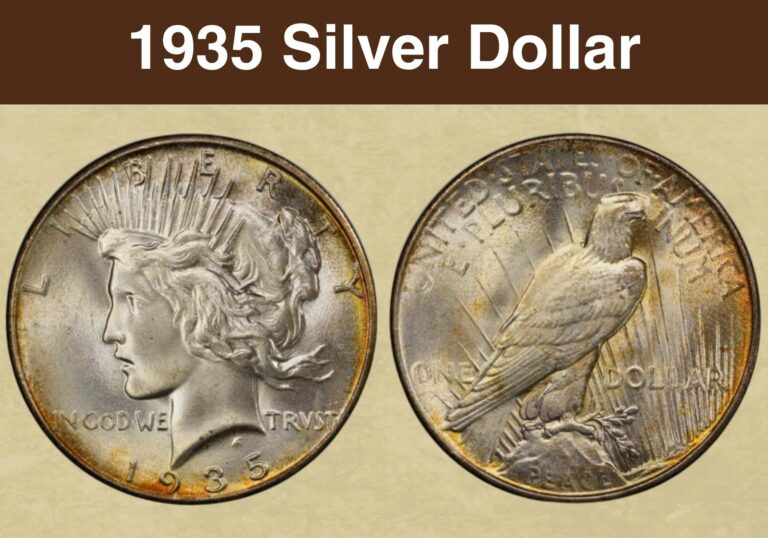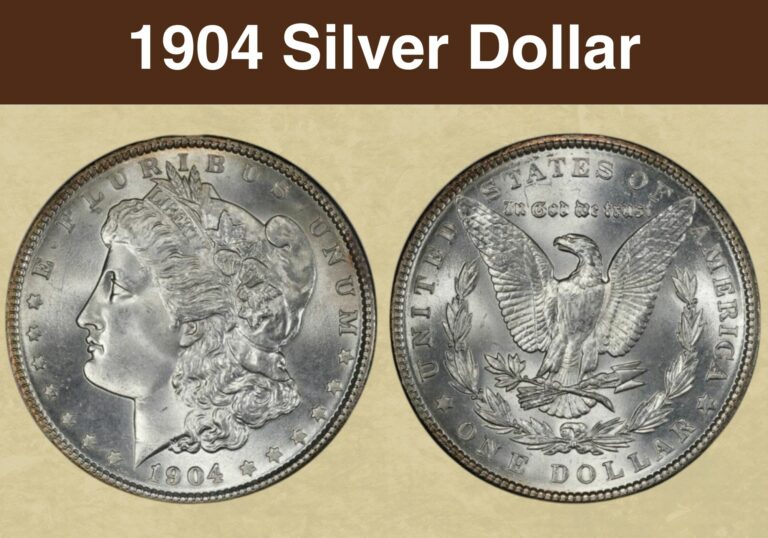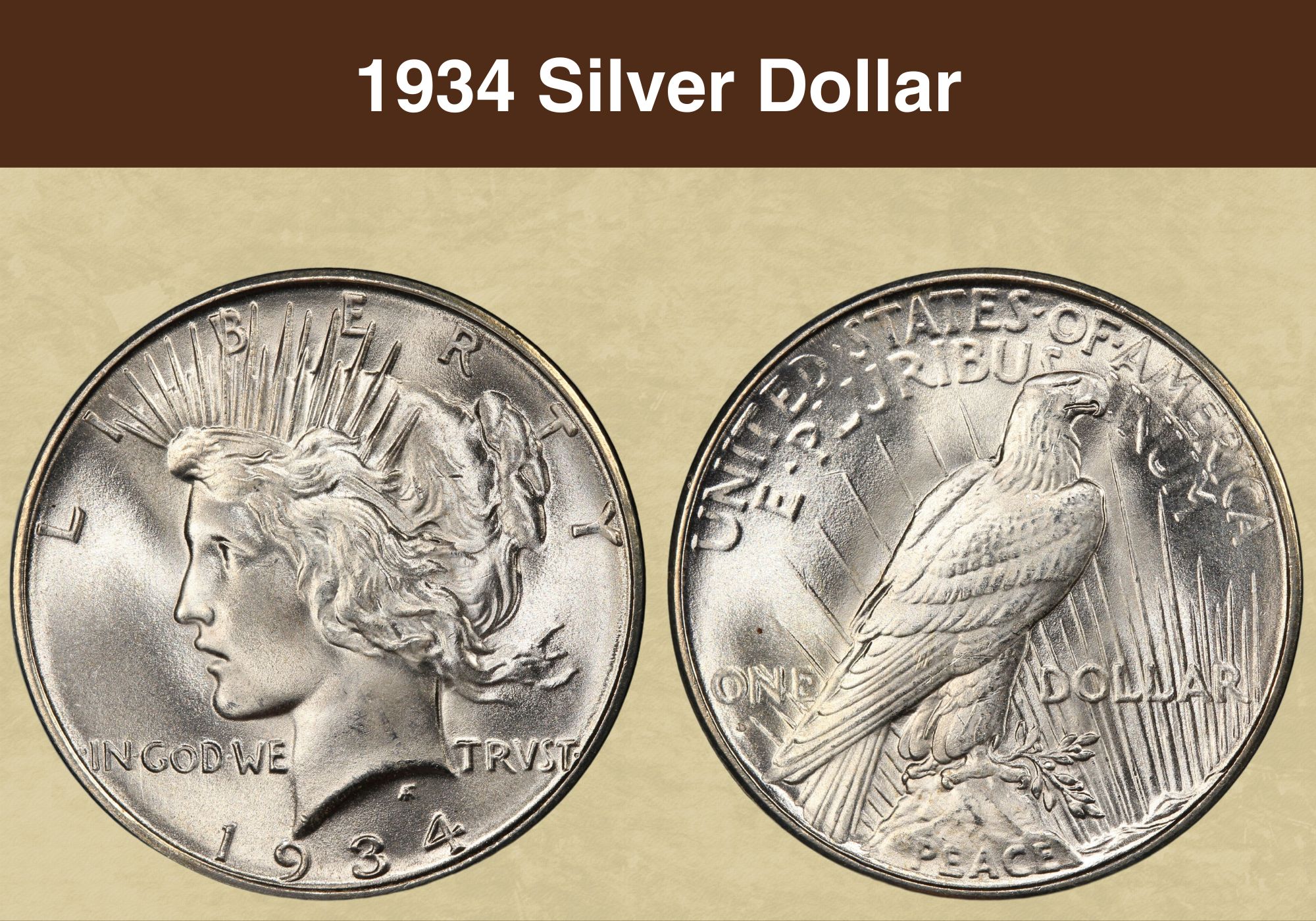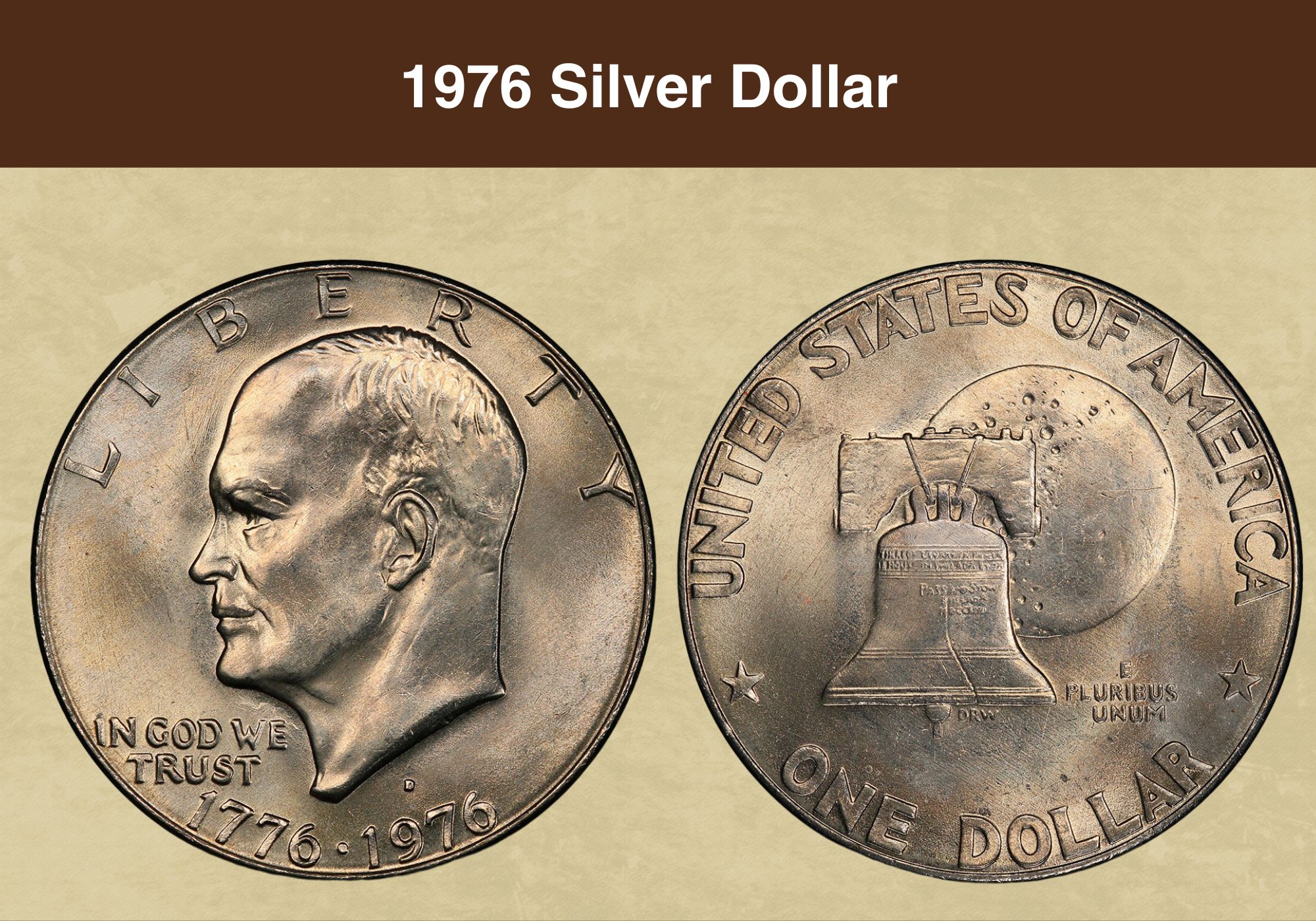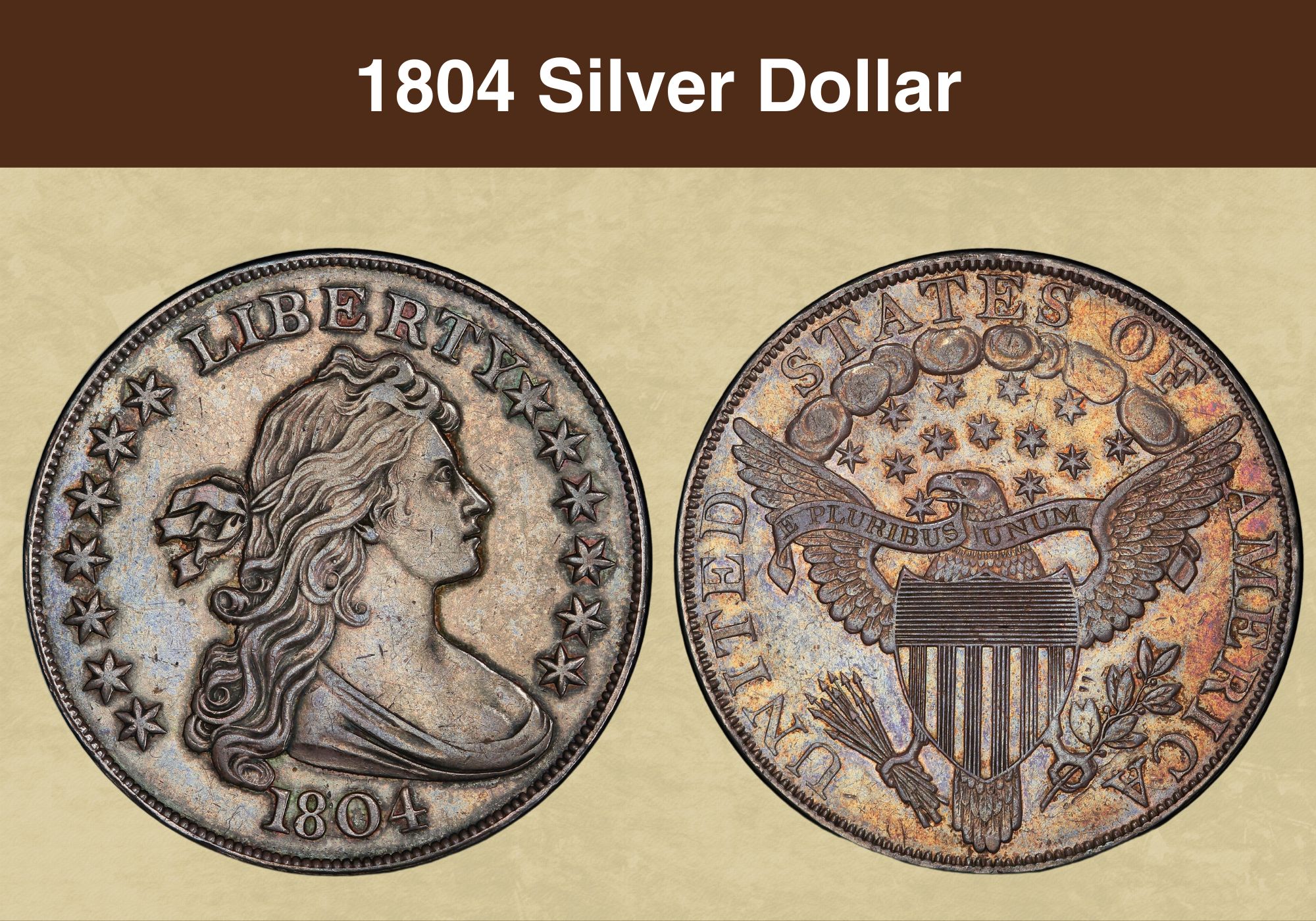
Coin Value Contents Table
- 1804 Silver Dollar Value Chart
- 1804 Silver Dollar Grading
- 1804 (Class I) Original Silver Dollar Value
- 1804 (Class II) Restrike Silver Dollar Value
- 1804 (Class III) Restrike Silver Dollar Value
- Copies and Counterfeits
- Rare 1804 Silver Dollar Coin Error List
- Where to Sell Your 1804 silver dollar ?
- 1804 Silver Dollar FAQs
Why are 1804 Silver Dollar coins still the talk of town more than 200 years after they were first struck? Is it because a piece sold for more than 7 million USD in 2021, or is it because they are still regarded as the king of coins till this day?
Well, one thing we can say for certain is that since the numismatic world got wind of the existence of these coins in 1842, the buzz is yet to die down.
To enable you to properly determine the 1804 silver dollar value, we’ve put together this insightful guide that consists of details and history responsible for the high value placed on these coins.
1804 Silver Dollar Value Chart |
|||
| Mint Mark | Very Fine-Extremely Fine | PR 58 | PR 63 |
| 1804 (Class I) Original Silver Dollar Value | $2,000,000 | $2,500,000 | – |
| 1804 (Class II) Restrike Silver Dollar Value | – | – | $10,000,000 |
| 1804 (Class III) Restrike Silver Dollar Value | $1,800,000 | $2,450,000 | – |
1804 Silver Dollar Grading
Due to them being extremely rare, the grading of the 1804 silver dollar is done by highly respected professionals. This includes third-party grading services like PCGS, NGC, ANACS, and IGS.
Here’s a video we recommend watching to get an in-depth grasp on how to grade the 1804 draped bust silver dollar properly.
1804 (Class I) Original Silver Dollar Value
The 1804 silver dollar series is undoubtedly a special coinage whose production circumstances differ from what you’d typically come across in the Numismatic world.
The class I 1804 silver dollars were minted circa 1835 for diplomatic purposes even though they bore the 1804 date. This was to prevent collectors from being upset that they could not obtain 1834-dated coins.
History
The history of this coin begins with Edmund Roberts in 1832. Being a commercial trader, Edmund was a United States diplomat to foreign Asian countries. His duties involved aiding the United States in brokering trade deals in these regions.
On one of his assignments, he reached trade agreements with the Sultan of Muscat and Oman and the finance minister of Siam, now modern-day Thailand. On this mission, he was given gifts to present to these dignitaries, but these gifts had little to no value.
After observing the reaction of the dignitaries to the gifts presented to them, Edmund Robert, on his return to the United States, wrote a letter on October 8, 1834, to the Department of State.
In this letter, he decried that the gifts were of little value. He stated that they insulted the dignitaries of his host country and requested that a set of gold, silver, and copper coins be given to the Said Bin Sultan, the Sultan of Muscat and Oman. This letter was passed on to then-President Andrew Jackson.
On November 11, 1834, the Secretary of State sent a letter to Mint Director Samuel Moore approving the production of a complete set of United States coins which would be presented to the King of Siam and the Sultan of Muscat.
It is said that the boxes presented to both dignitaries contained the silver dollar and the Golden Eagle.
Seeing that the suspension placed on the production of the silver dollar had been lifted and the last known silver dollar produced was in March 1804 and bore 1803 as the production date; the Mint struck two proof finished coins minted between the end of 1834 and the beginning of 1835 before Robert embarked on his journey.
Robert delivered the gifts to Said Bin Sultan on October 1, 1935, and that of the King of Siam the following year. Before he could, however, establish contact with other nations like Japan, he died.
After Robert’s death, other diplomatic gifts onboard the diplomatic fleet were directed to be returned to the United States by diplomatic fleet commodore Edmund P. Kennedy. It is said that 19,570 1804 silver dollar coins were minted, and those proposed for diplomatic missions to Cochin-China and Japan might have been among them. However, only 12 are accounted for to this day.
The set of coins gifted to the Siam King went down several generations until it finally reached the Smithsonian Institute in 1983. During this period, the coin earned the name “The King of American Coins.” Later, the 1804 silver dollar gifted to the Siam king found its way to the hands of a private collector who paid $4 Million dollars for it.
Obverse
The obverse of the king of American coins features a draped allegorical representation of Lady Liberty; for this reason, it is also called the Draped Bust silver dollar. Here, Liberty is facing right, and the inscriptions “LIBERTY” and “1804” appear at the top and bottom of the obverse, respectively.
On close examination and after counting, you’d also realize that the obverse features 13 stars; seven are on the left side of the coin, while the other six are on the coin’s right side.
Reverse
The reverse of this coin focuses on the heraldic Eagle occupying the center, its wings spread out, the left talon holding an olive branch, while the right holds a quiver of arrows. You’ll also notice a shield on the Eagle’s chest.
Other notable details on the reverse include;
- Thirteen stars right above the Eagle
- The words United States of America occupy the circumference of the reverse and
- E PLURIBUS UNUM written across the Eagle’s neck
Details
The class I 1804 silver dollar was designed by Robert Scot, and it comprises 90% silver and 10% copper. This coin was minted in the Philadelphia mint; it weighs 27 grams and has a diameter of 40mm. Finally, a total of eight class I 1804 original silver dollar coins exist today. Each goes by its specific nickname;
This includes;
the U.S. Mint specimen, which was transferred to the Smithsonian Institution
The Cohen-Ana specimen was initially owned by Willis Dupont but was stolen from him in 1967. Now, it is on display at the American Numismatic Museum in Colorado Springs
The Mickley – Reed Hawn Specimen was in the ownership of Joseph J Mickley initially but was sold for a whopping $3,725,000 by Heritage Auctions in 2008.
There’s also the Parmelee – Byron specimen, which was owned by Byron Reed but is now in possession of the Durham Western Heritage Museum
the Dexter specimen
Others include the Watter-Childs specimen (from the Sultan of Muscat set) and the King of Siam Specimen. PCGS grades both as Proof-68 and PR-67, respectively.
Value
Moving on to the value of the 1804 silver dollar, as you would expect, its value is no child’s play. Also, over the years counterfeiters have made several efforts to pass off fakes as original.
The value of Class I 1804 silver dollar has increased steadily over the years, from 1885, when it was sold for $1,000 by Henry and Samuel H. Chapman, till today.
Also, this coin is available in only proof finishes, and today, those in the VF-20 – EF-40 grade are valued as high as $2,000,000.
With this in mind, the Class I original 1804 silver dollar is without any doubt a novelty coin as one sample sold for a whopping $7,680,000 in 2021. This PR68 grade 1804 silver dollar is the second most expensive coin today.
Also read: 12 Most Valuable One-Dollar Coin Worth Money
1804 (Class II) Restrike Silver Dollar Value
The next variety of the 1804 silver dollar is the class II restrike. Although restriking of coins was done openly in the 1830s, the 1850s saw mint employees secretly producing unauthorized copies of coins and backdating them. When collectors discovered that several 1804 silver dollar coins fell into this category, they sought to have them.
These class II coins were struck in 1858 and were distinguishable from the original 1804 silver dollar coin by their unlettered edges. Their unlettered edges were a result of striking them on 1857 Swiss (Bern) Shooting Thaler instead of the Castaing machine used for the original class I coins struck for the foreign diplomats.
Seeing that these restrikes were made before James Ross Snowden’s appeal to the Treasury Secretary to create restrikes of rare patterned coins, it is apparent that striking coins before approval were a regular occurrence in the US Mint.
Furthermore, of the five of this class II restrikes that were known to be in private hands, three were recalled and destroyed, one was given to the National Numismatic collection, which remains to this day, however, to this day, the whereabouts of the last known class II 1804 silver dollar restrike coin remains unknown.
1804 (Class III) Restrike Silver Dollar Value
The Class III restrikes of the 1804 silver are another set of the 1804 coins whose backstory is fascinating.
After a great deal of research, we discovered that several of these coins were struck around the same period the class II 1804 silver dollar coins were struck. Their existence was, however, not verified until 1869 when a coin collector rejected one of them, stating that it was a restrike.
Six 1804 class III silver dollar restrikes were produced, and they all featured lettering on their edge similar to that of the class I 1804 silver dollar coins.
In an attempt to pass class III off as the original class I, mint workers fed already struck class III coins to the castaing machine used for the class I coins. This was to ensure that the class III restrikes featured edge lettering.
However, since the edge lettering should have been done before the coins were struck, the class III 1804 silver dollar coins ended up having a somewhat concave appearance.
It is believed that although some 1804 class III silver dollar restrikes were made together with class II, some were also struck in 1876. Here is a list of some of the nicknames of the class III 1804 restrike silver dollar, taken from their respective owners.
- The Bergs Specimen
- The Adams Specimen
- Davis Specimen
- Linderman Specimen
- Rosenthal Specimen and
- Idler Specimen
Value
Over the years, the value of the class III 1804 silver dollar ranges from $1,800,000 to $3,750,000, depending on the coin’s grade on the Sheldon scale.
Copies and Counterfeits
This guide will be incomplete if we do not state that over the years different people have created several copies and counterfeits of the 1804 silver dollar intending to pass them off as the real deal.
Although some, like the Electrotype 1804 silver dollar coin and James Bolen copies, were made with no intent to deceive but to educate, the same cannot be said of many of the others.
To successfully pass a fake off as an original, these counterfeiters manipulated the original 1801, 1802 and 1803 silver dollar coins to look like the 1804 silver dollar. It is even recorded that John T Raymond fell victim to one of such deceits after purchasing a forged coin for $300.
Also read: 14 Most Valuable Coins In Circulation
Rare 1804 Silver Dollar Coin Error List
The restrikes and the 1804 silver dollar original do not possess any known mint errors. You might think features like the missing letters in the class II coins and the excess space between the word “states” and “of” in the class II and III to be errors. However, they are not.
If any of the 15 known 1804 silver dollar coins had any production errors, its value would be off the roof.
Also read: Top 10 Most Valuable Morgan Silver Dollar Worth Money
Where to Sell Your 1804 silver dollar ?
Now that you know the value of your coins, do you know where to sell those coins online easily? Don’t worry, I’ve compiled a list of these sites, including their introduction, pros, and cons.
Check out now: Best Places To Sell Coins Online (Pros & Cons)
1804 Silver Dollar FAQs
What is the Most Expensive Dollar Coin?
The most expensive dollar coin sold is the 1794 flowing hair silver dollar which sold for $13,311,850. It is very likely that the makers of this coin at the time never conceived that it would ever be worth this much, especially since it was minted over 200 years ago.
How many 1804 silver dollars are there in the world?
Although the U.S. Mintage records show that the Mint produced nineteen thousand five hundred and seventy 1804 silver dollar coins when Andrew Jackson was president of the United States of America, only 15 of these coins can be identified today.
How Can You Tell If An 1804 Silver Dollar Is Real?
For experts, identifying an authentic 1804 silver dollar coin should be a piece of cake; however, if you’re a newbie or unsure, here’s how to discover if the 1804 silver dollar in your possession is the real deal. First, you want to start by testing it with a magnet; if it magnetizes, it probably isn’t real because the real 1804 draped burst is made of 90% silver which isn’t magnetic. Next, you need to weigh the coin. It is likely fake if its weight is far from 26.96 grams. Lastly, consult a professional or independent coin grading service.

